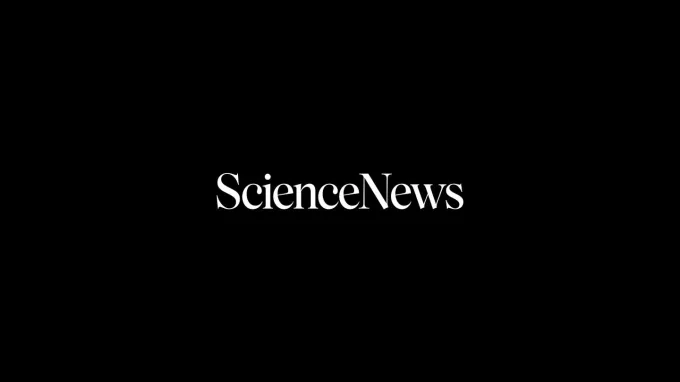Science News Magazine: Current Issue
Vol. 183 No. #7
Trustworthy journalism comes at a price.
Scientists and journalists share a core belief in questioning, observing and verifying to reach the truth. Science News reports on crucial research and discovery across science disciplines. We need your financial support to make it happen – every contribution makes a difference.
More Stories from the April 6, 2013 issue
-
 Health & Medicine
Health & MedicineSurgery shows promise in treating persistent heartburn
Ring-shaped device around esophagus prevents acid reflux so that patients can stop taking drugs.
By Nathan Seppa -
 Space
SpaceNew home for runaway black hole
Galactic merger and ejection may have sent a cosmic wanderer through deep space.
By Andrew Grant -
 Earth
EarthModerate climate warming could melt permafrost
Ancient cave formations in Siberia reveal effects of warmer past on frozen ground.
-
 Earth
EarthNutrients matter in tropical forests
Soil nutrients and rainfall predict tree species range in Panama’s tropical forests.
By Meghan Rosen -
 Health & Medicine
Health & MedicineMouse brain cells live long and prosper
Mouse neurons live twice as long as usual when transplanted into rat brain, suggesting that brain deterioration may not necessarily accompany long life.
By Meghan Rosen -
 Life
LifeImpact craters may have been a toasty home for early life
The heat generated during a cosmic crash could have nurtured ancient organisms.
By Erin Wayman -
 Space
SpaceRadiation ring around Earth mysteriously appears, then dissipates
Space probes detect temporary transition from two radiation belts to three, possibly in response to solar activity.
-
 Life
LifeSperm swim against the current
Human and mouse sperm both follow upstream currents to the egg.
By Meghan Rosen -
 Health & Medicine
Health & MedicineBaby may be cured of HIV
Only viral traces remain after prompt treatment of newborn, suggesting no working virus is left in the girl’s body.
By Nathan Seppa -
 Life
LifeCamel ancestors lived in the Arctic
Fossils on Ellesmere Island suggest famous desert dweller got its start in cold regions.
By Erin Wayman -
 Physics
PhysicsVortex gets tied in knots
Physicists use 3-D printing and tiny bubbles to capture twisted-up water.
By Andrew Grant -
 Space
SpaceNo vacancy around stars
The Milky Way’s planets pack tightly around their stars, according to simulations using data from the Kepler space telescope.
By Andrew Grant -
 Life
LifeMice get brain boost from transplanted human tissue
An experimental transplant of what have long been considered just support cells shows they may play a role in memory and learning.
-
 Life
LifeAlga borrows genes to beat the heat, acid and toxic metals
Such genetic theft from bacteria and archaea is unusual among eukaryotes.
-
 Planetary Science
Planetary ScienceDistant planets’ atmospheres revealed
Telescopes get first direct glimpse of gases on exoplanets.
By Erin Wayman -

-

-

SN Online
ATOM & COSMOS Curiosity finds minerals consistent with habitability. See “Life-friendly environment confirmed on Mars.” JPL-Caltech/NASA BODY & BRAIN Scientists meld rat minds in “Rats do tasks while connected brain-to-brain.” CULTURE BEAKER See Rachel Ehrenberg’s column on website comments, “Trolls bad news for scientific discourse.” ON THE SCENE BLOG Kids build plasma guns and more […]
By Science News -
 Humans
HumansStudents honored for research
The 40 finalists in this year’s Intel Science Talent Search received a total of $630,000 in awards for their research. The top 10 received $20,000 or more.
By Meghan Rosen -

Antarctica: An Intimate Portrait of a Mysterious Continent by Gabrielle Walker
A science writer takes readers on a journey to the bottom of the Earth through firsthand accounts of her travels with scientists. Houghton Mifflin Harcourt, 2013, 388 p., $27
By Science News -

Friendfluence: The Surprising Ways Friends Make Us Who We Are by Carlin Flora
Citing studies on evolution and psychology, this exploration of the nature of friendship shows the importance of making and keeping friends. Doubleday, 2013, 288 p., $25.95
By Science News -

Radiation: What It Is, What You Need to Know by Robert Peter Gale and Eric Lax
A medical doctor and a writer team up to dispel misconceptions about radioactivity and explain the risks of everyday exposures. Knopf, 2013, 270 p., $26.95
By Science News -

Alien Life Imagined: Communicating the Science and Culture of Astrobiology by Mark Brake
See how humans’ fascination with the possibility of extraterrestrial life has evolved over the centuries. Columbia Univ., 2013, 279 p., $35
By Science News -

BOOK REVIEW: Louis Agassiz: Creator of American Science by Christoph Irmscher
Review by Erin Wayman.
By Science News -

-

-
 Physics
PhysicsAs Erebus Lives and Breathes
The Antarctica volcano’s long-lived lava lake coughs up clues to the physiology of volcanoes .
By Janet Raloff -

Letters to the editor
Get a grip The article “Pruney fingers get better grip” (SN: 2/9/13, p. 11) indicated that skin wrinkling in response to extended exposure to water was the result of constricting blood vessels. I was waiting to read about the possibility that this was the body’s response to prevent heat loss. Water has a high heat […]
By Science News -

-

The Enlightenment Vision: Science, Reason, and the Promise of a Better Future by Stuart Jordan
A physicist reviews the Enlightenment of the 17th and 18th centuries — considered the “rise of reason” — and the progression of scientific knowledge since. Prometheus, 2013, 295 p., $26
By Science News
